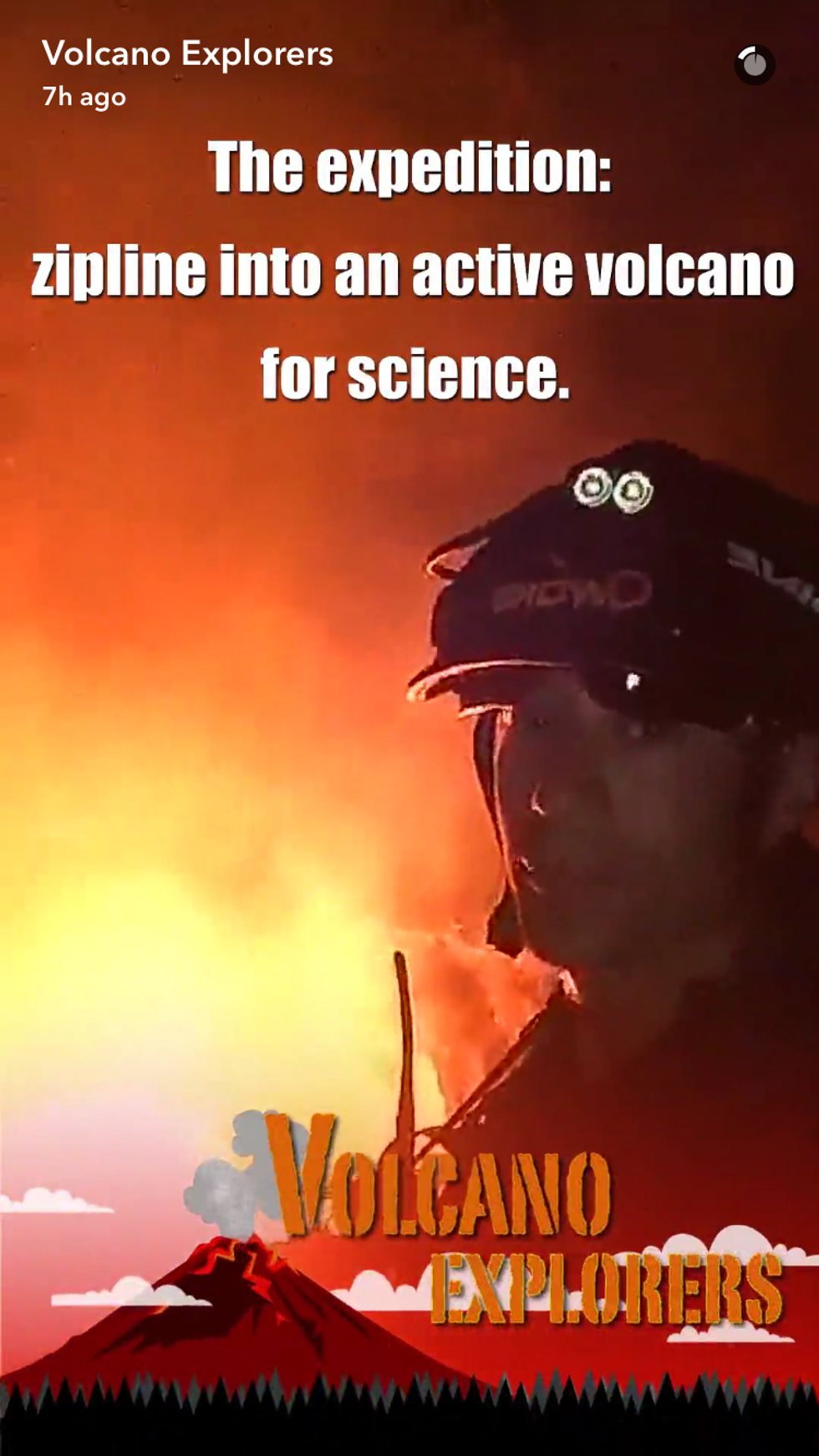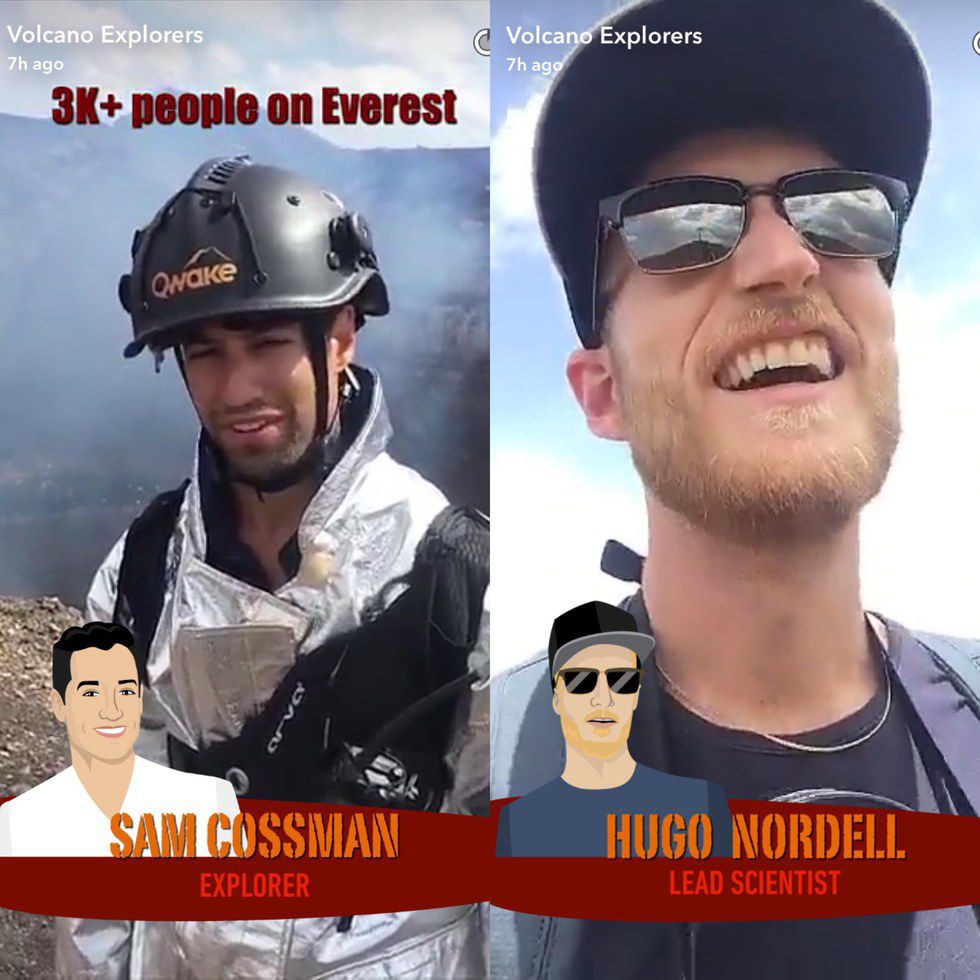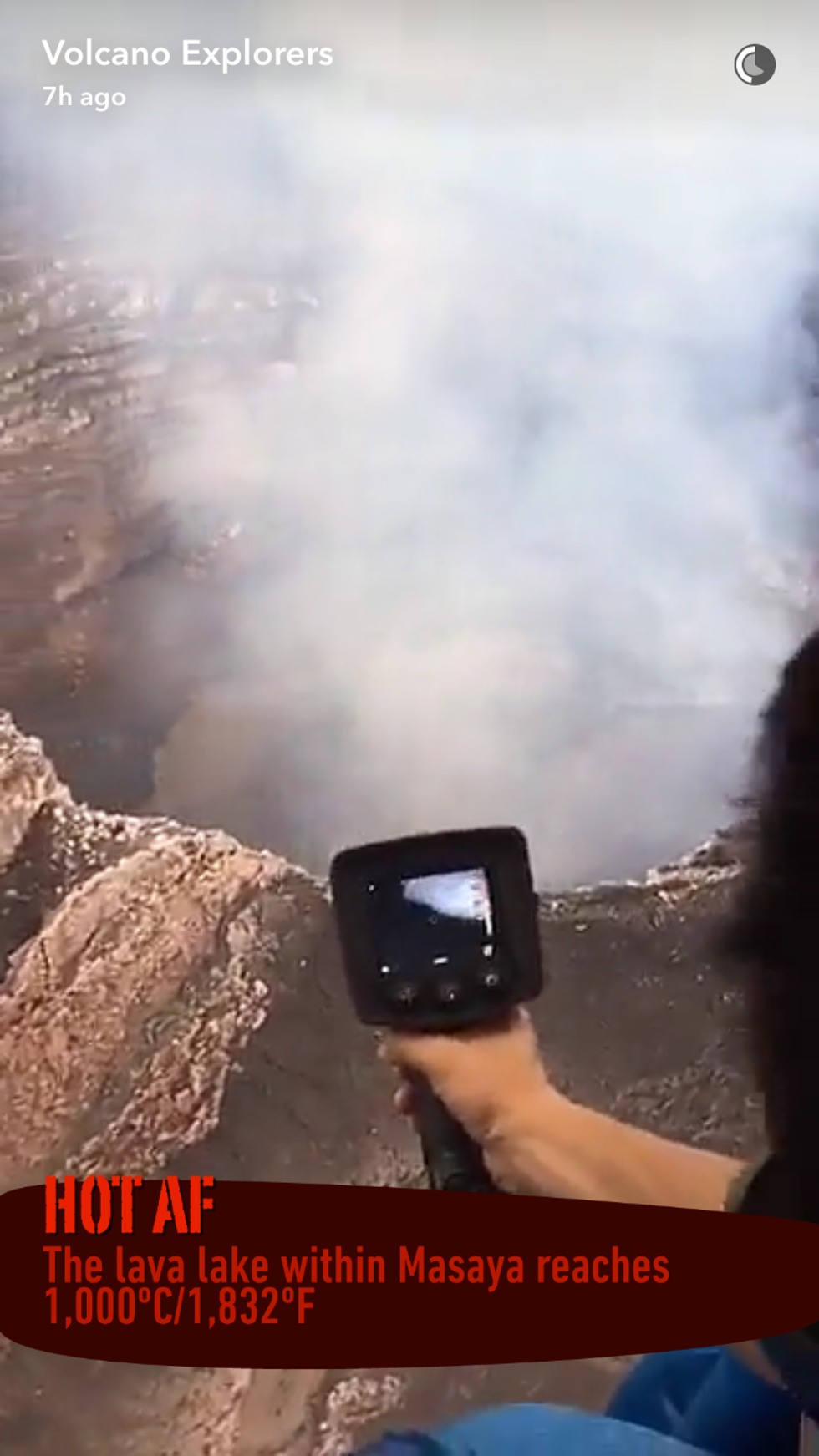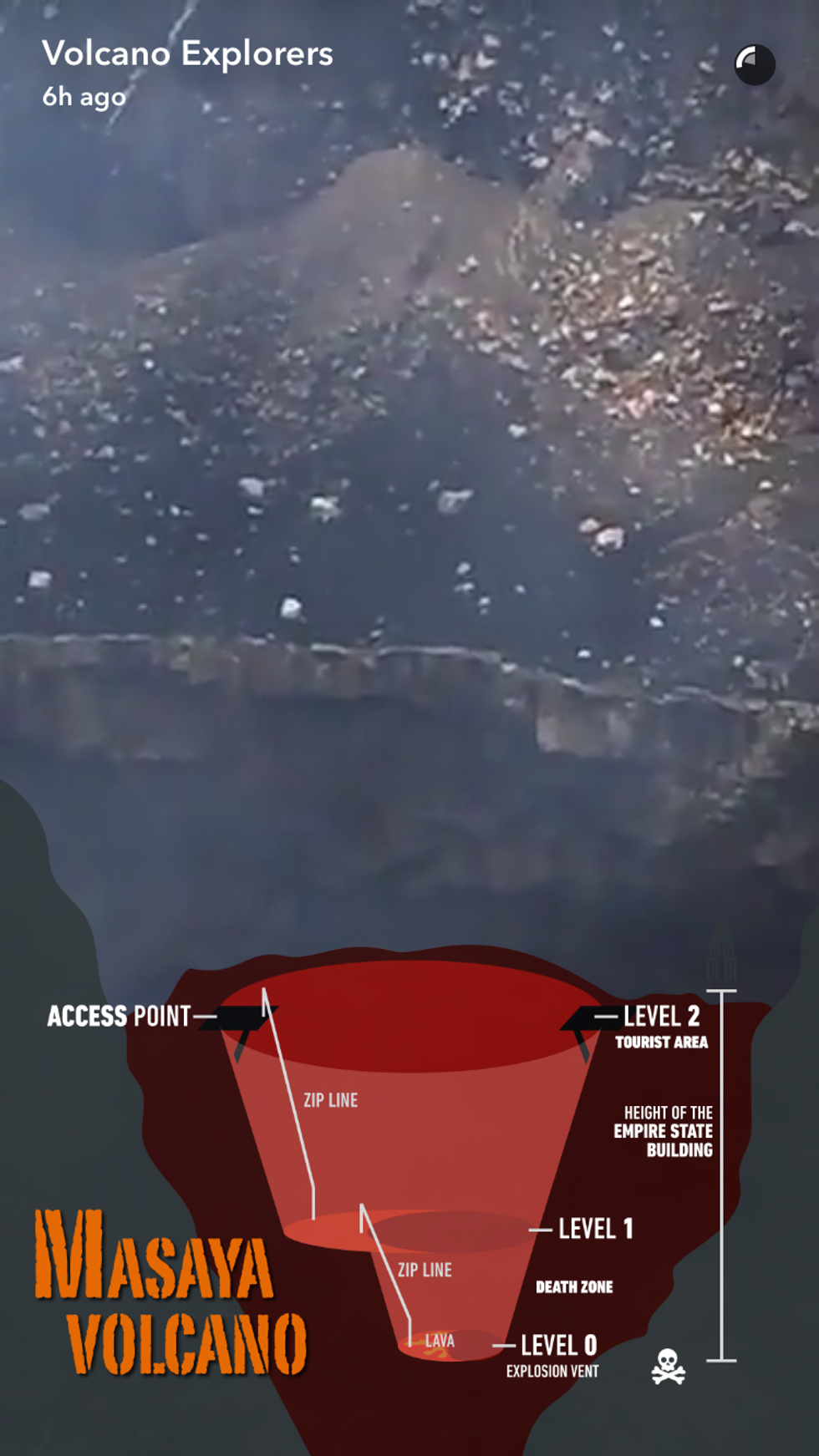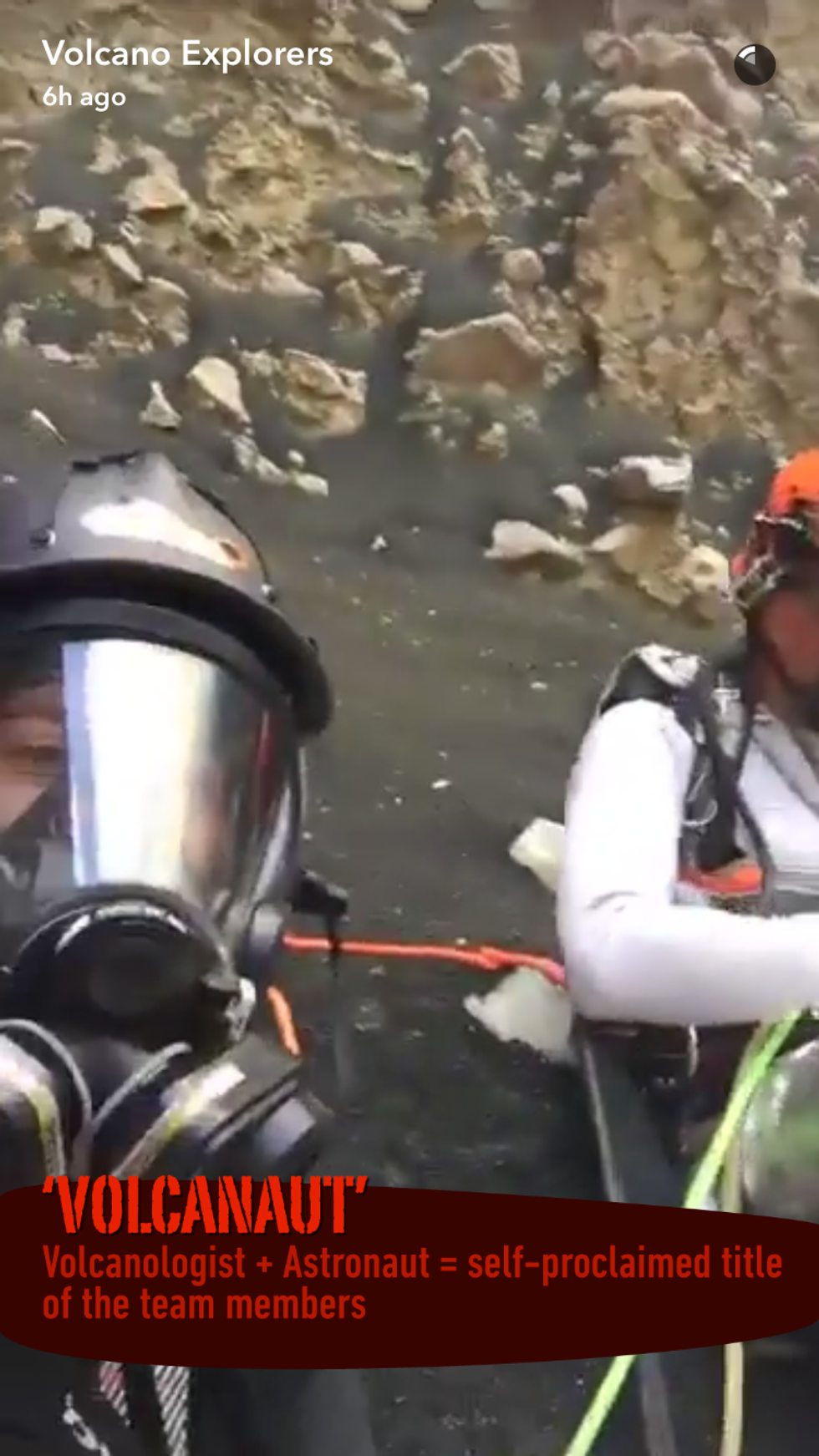It's a safe assumption that if you have a smartphone, you probably have the popular social media and photo sharing app, Snapchat. It's very popular among millennials and has greatly improved its curb appeal for users since it's original release in 2012. Users can sign on, take nine second videos and pictures, send to desired 'friends' that disappear after viewing, or even post to a "story" that your Snapchat friends can view. One of the newer updates features "stories" from significant events around the globe. This can be anything from Fashion Week, a music festival, the Rio Olympics, all the way to a shuttle launch. Each of the stories are public for all Snapchat users to view and include special graphics that emerge in the form of filters or "geo-tags" giving the specific locale of each of these stories. It's truly a neat way to see the world from someone else's perspective.
For those of you who have and use Snapchat, you know exactly what I'm talking about; those little thumbnail boxes that feature cool shit you're too broke to afford. (Oh wait, that's me...) The thing about Snapchat, specifically these public stories, is that you get experience what other people are doing in real time without knowing them. Although, I still really can not wrap my head around why anyone would rather watch Kylie Jenner put on layers of make-up for hours rather than awesome science shit, nonetheless, It's equal parts creepy as hell and futuristic AF.
I realized just how cool the Snapchat story feature is when i watched the Volcano Explorers public story that was posted early on August 16th, 2016. The unfathomable reality that we are at a point in history that we can send some guys deep into an active volcano really sank in the third time watching the story.
I watched in amazement as Sam Cossman and Hugo Nordell suit up and prepare to descend into a lava lake. As you can see in the picture of Crossman below, his helmet says "Qwake", which is actually the company behind the cutting-edge technology that makes it possible to bring social media into these outrageous places, all for the sake of science.
The Snapchat story shows the two with a special team in Nicaragua explore the Maysaya Volcano. They were outfitted with specially designed suits to withstand the extreme heat temperatures and a zip line that was made of materials resistant to the heat produced by the volcano.
GE sponsored the experiment and the team was provided with roughly 50 sensors created by the company's powerhouse. These sensors will record various data while in the "Gate to Hell" in hopes of collecting atmospheric pressure, temperature, and carbon dioxide levels that will ideally be able to determine the next eruption in time to evacuate the nearby locals.
Since this is an active volcano in the heart of Nicaragua, it's a hazard to the people who live nearby! In fact, while the team was traveling to the site, they stopped in the city center of Masaya and we're shown a "volcano drill" demonstrated by young school kids. And there's a good reason that its widely known as the "Gate to Hell". The Snapchat filer in the screengrab above shows just how hot it gets inside of a volcano. With roaring lava and years of folk tales about disasters caused by the volcano, a history lesson was in order. In the Snapchat story, a few video clips were shown of crosses placed near by in order to ward off anything that would come from hell.
The "geo-tag" shown above laid out just how the zip line would work and the guys would make it down to the lava lake. Not to mention, just how dangerous of an undertaking this was. Once they arrived, it was time to get down to business. Taking Snapchat with them the whole time! The team was careful with their training and the placement of the zip line to be sure the site was safe for the Sam and Scott Parazynski a NASA astronaut who accompanied the brave explorer on his first ride down into the Mouth of Hell. After getting down to the first level, the pair stopped for a selfie before placing the sensors successfully. Of course, Snapchat was behind their new self-dubbed title with a special filter as seen below.
The crew faced a few storms while on the expedition, which is problematic because of the metals used on site. If something got struck by lightning, they would have to postpone. One part of the story showed a storm on the horizon wile Hugo & Sam were in the lava lake! The team acted quickly so the two wouldn't have to spend the night in the epicenter of this active volcano over night!
After the sensors were placed, the Volcanauts safely returned from the lava lake and it was time to celebrate. I watched all of this unfold on Snapchat in absolute amazement. 2015 was a huge year for science, now 2016 came back and put the inner workings of a volcano on the Internet! How cool is it that we live in a time like this? Everyone I've talked to had missed this awesome event. Like, how?! If companies like GE are powering Qwake to get this information out to the public, what else can it do? Are we close to being able to predict earthquakes using the same technology? Can these sensors be places on plates and under water? WHAT IS NEXT?!
If you're still heated about what new adventures Qwake is going on, you can follow them on Instagram and Facebook. GE kept the hype alive by posting an AMA live video on their Facebook page that shows extra footage and even more information that didn't make the cut of the three minute Snapchat story.
A lot of people, specifically parents, are turned off by the privacy of Snapchat; the photos "disappear" and outside of the public stories, you can only access other stories if you are "Snapchat friends", but when I can set on my couch and whiteness a thrust in the right direction for the sake of science, you'll have a hard time arguing with me that this isn't the coolest that that has ever happened on Snapchat.




